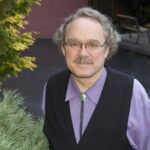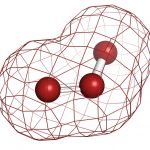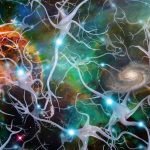Book Review: Fundamentals of Generative Medicine, Volume 1
Mitchell Bebel Stargrove, ND, LAc
Fundamentals of Generative Medicine, Volume 1, by Peter D’Adamo, ND, MIFHI
In principle, naturopathic medicine has always been about personalized care (treat the person, not just the disease); however, all too often daily clinical practice falls into the chasm between theory and application. Throughout his professional life, Dr Peter D’Adamo has been working to manifest this core principle in clinical reality by developing models and by evolving tools. Never willing to rely on platitudes or hand-me-down anecdotes, he weaves together naturopathic philosophy and cutting-edge science with skill and artistry. While he is all too often simply tagged as that “blood type diet guy,” Peter deserves credit for challenging healthcare professionals and the public to move beyond one-size-fits-all declarations based on “healthy diet” generalizations and moral declarations. If all you know of this author are his popular works or secondhand discussions of the ABO blood group diet system, then you are in for a major revelation when you step into the material geared for healthcare professionals. In his writing and teaching, he has long since moved far beyond those simple formulae through secretor status specificities and epigenotype refinements and now into generative medicine, with volume 1 (!) clocking in at more than 800 pages. Like the rock star who gets tired of playing his top 10 hits from a decade ago, this work pushes the limits and challenges NDs to catch up with, integrate, apply, and move beyond the research, concepts, and nomenclature of systems theory, genomics, epigenetics, and the emergent properties of a scientific era that could be indigestible for conventional medicine but is a feast for those of us who love nature and revel in the revealing of her mysteries.
I have been known to declare that naturopathic medicine needs to frame itself as primarily the medicine of physiology, in contrast to conventional medicine’s position as almost exclusively the medicine of pathology, which may be a bit overstated but is fundamentally accurate. In our daily dialogue with patients and with each other, many of us speak of “the body” as an active participant in the therapeutic process; what that actually refers to is seeing the patient’s body-mind as a microcosmic localization of the macrocosm of nature. Well, nature has been opening up some big secrets over the past few decades, and our worldview, educational programs, and clinical practices would do well to surf these big waves.
I often wonder how the emergence of pharmacogenomics and all the talk of personalized medicine will come to fruition in a conventional medical model. What happens when the state-of-the-art medicine can no longer operate on the default bias of treating generic patients for generic diagnoses and expecting a generic response to drug therapy? At first blush, that does not seem much of a challenge to our evaluation and prescribing, but once you look into what is in this book, you will be seeing a fresh perspective on familiar terrain. If you had intuited that the emerging “-omics” sciences might somehow fit well into the personalized approach aspired to in the naturopathic paradigm, then you now have a refresher course, a method, and a basic set of analytic tools.
This book represents a solid foundation to practical clinical application of the principles of scientifically informed vitalistic medicine and, as such, a challenge to members of the naturopathic profession to evolve, synthesize, and reformulate our methods and models to reflect our core theories and principles in a contemporary iteration. Whether you use D’Adamo’s tool set or not is secondary. The point is that the bar has been raised and the terrain of discussion has shifted; moving naturopathic medicine into this century demands that we make a qualitative leap in our discourse and nomenclature, models, and implementation. If you are not one of the students on his clinic shift at the University of Bridgeport, Connecticut, you may want to parcel out a little time every day to digest and assimilate this nutritive offering.
The 6 sections of volume 1 reintroduce the reader to many basics of physiology, biochemistry, and genetics, albeit reframed within a cutting-edge model synthesizing naturopathic principles and state-of-the-art complexity science. Bringing together ageless philosophy and scientific detail cuts to the quick in challenging the reader to engage the nuances of the scientific literature to substantiate the potential of clinical genomics of susceptibility, compatibility, and opportunity. Using neither protocols nor platitudes, D’Adamo delivers a reasoned and researched method for understanding, parsing, and implementing personalized care.
In section I, complexity theory and systems biology reveal themselves as an emergent explication of the dynamics of health, dysfunction, and disease that updates and expands the classic principles of vitalistic medicine in a way our forebears could only have dreamed of. Yes, natural systems thrive in the stability of chaos; too much order can translate into stagnant physiology, wayward self-organization, and poor responses to contextual challenges and therapeutic interventions. This often dense and intricate material offers some rewarding recovery and clarification of valuable insights misunderstood or discarded by the neo-Darwinian status quo and conventional medicine. Section II retells the basics of genetics and mutation but with a special emphasis on the migration patterns of ancient peoples and their implications for haplotype mapping. As a historian, I welcome the chance to learn more about the historical basis of genetic variation and the evolving interplay between diet and culture. As a clinician, I enjoy playing with the morphometrics, dermatoglyphics, and other practical expressions of morphology in the context of the particulars of physical examination. Polymorphisms and their influence in shaping biochemical individuality through enzyme variability set the stage for stepping forward into a working discussion of “morphogenic” patterns and phenotypic plasticity in section IV. Sections V and VI engage us with the peril and promise of epigenetics and introduce us to the opportunities and risks of gene expression. On the one hand, environmental exposures can induce downstream genetic aberrations more rapidly and deeply than Lamarck or Darwin would have ever imagined. Conversely, by knowing our genotypic predispositions, D’Adamo offers the meaningful challenge of navigating our choices to favorably tilt the probabilities of gene expression (ie, favorable foods and life-enriching (literally) activities vs exposure to reaction-inducing foods and life-deranging xenotoxins); all we need are some clear road signs. In particular, the reader receives a guided tour of “lectin land,” where the specifics of phytochemistry (as well as synthetic compounds) reveal the reactivities and benefits of individual and classes of foods, isolated nutrients, and botanical constituents extending far beyond the basic blood type (ABO) categorization. Even without implementing all that this system proposes, there are literally hundreds of clinically relevant bits of data, analysis, and pattern recognition that could guide every physician in selecting what to prescribe and advise and what to avoid (or at least be more skeptical of) in treating each patient as an individual rather than just repeating the mantra of doing so. Overall, this work presents a rich and enriching orchestration of fact and theory, data and principles, and model and implementation that effectively provides the reader with a wealth of practical detail for immediate application. Yet, more broadly, D’Adamo offers a grounded, flexible, and vigorous approach that can also renew your sense of awe for the mysteries of nature, not just in the forest, mountains, or sea but in the intricacy, elegance, and resilience of the natural systems that we embody.
The ongoing and often caricatured debate of “classical naturopathy” “vs” “green allopathy” (including easy recourse to pharmaceuticals) demands a major upgrade in its level of discussion, with a sincere openness to the as yet unimagined. In this landmark publication, Peter opens the door into a big room where lots of familiar pieces are brought together in ways we will discover or recognize as never before. The issue is no longer old or new—or even drugs, herbs or nutrients, or one or another suite of diagnostic techniques, treatments, and procedures—but is fundamentally an invitation, actually an imperative, to build on core philosophy and principles and to expand in new ways that challenge our complacency, fear of innovation, and the challenges of facing our own ignorance. This book opens up a bold new frontier that carries on the tradition of Hahnemann and Hering, Scudder and Jones, Bastyr and Turska, Mitchell and Pizzorno—the innovators, clinicians, and educators within the naturopathic profession—as well as our precedent and allied communities of practice. The pivotal issue is not one of science vs no science but of sound, specific, and clinically relevant science within a comprehensive vitalistic worldview. This means claiming and shaping an approach to scientific discovery and method that expresses our philosophy, values, and weltanschauung—one that respects nature and the vital wisdom of the patient, his or her physiology, and life force—and that assists us in helping patients recover and enhance their health.
In my own work with drug-herb and drug-nutrient interactions, we focus on pharmacogenomics as much as possible given the immature state of the available literature, but frankly I will be putting on my D’Adamo cap when working on future iterations. Bravo, Peter, and thanks for the pictures and charts; they make all the big words and imposing nomenclature easier to grow into. In particular, I am looking forward to volume 2 and the playing out of this knowledge and these patterns of analysis into clinical practice by strengthening herbal and nutritional prescribing with genomic discrimination. I could use a peek, as could most of us striving to grok and apply power-law distribution!
Published by Drum Hill Publishing, Wilton, CT, 2010.
Available through http://www.drpeterjdadamo.com/generative/textbook.shtml
 Mitchell Bebel Stargrove, ND, LAc graduated from the Oregon College of Oriental Medicine (1987) and the National College of Naturopathic Medicine (1988) and practices in Beaverton, Oregon. He has taught History of Medicine at both schools. Dr. Stargrove coordinated development of IBIS (Integrative BodyMind Information System). He is lead author of Herb, Nutrient, and Drug Interactions: Clinical Implications and Therapeutic Strategies (2008) and InteractionsGuide as well as a contributor to and Lead History Editor of the Foundations of Naturopathic Medicine.
Mitchell Bebel Stargrove, ND, LAc graduated from the Oregon College of Oriental Medicine (1987) and the National College of Naturopathic Medicine (1988) and practices in Beaverton, Oregon. He has taught History of Medicine at both schools. Dr. Stargrove coordinated development of IBIS (Integrative BodyMind Information System). He is lead author of Herb, Nutrient, and Drug Interactions: Clinical Implications and Therapeutic Strategies (2008) and InteractionsGuide as well as a contributor to and Lead History Editor of the Foundations of Naturopathic Medicine.










